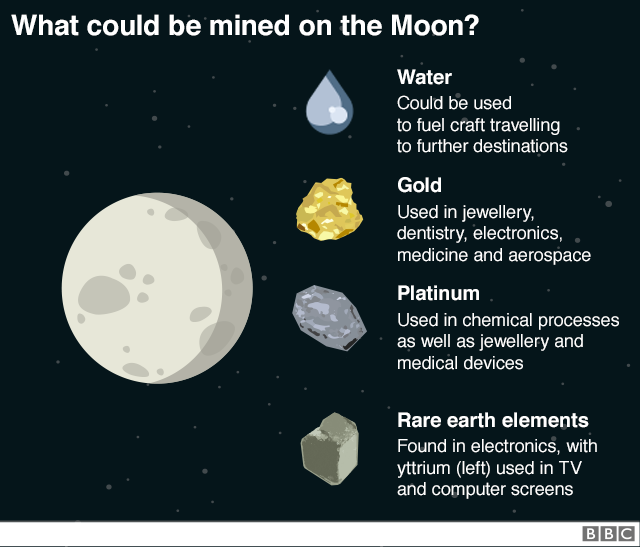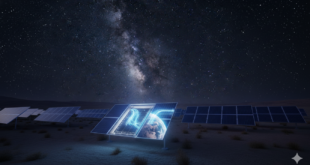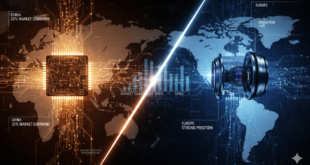In the vast expanse of the cosmos, the Moon beckons humanity with promises of adventure, discovery, and opportunity. In recent years, the notion of establishing human settlements on the Moon has evolved from science fiction to a tangible ambition pursued by space agencies and private enterprises worldwide. This ambitious endeavor, driven by the prospect of harnessing the Moon’s vast resources and unlocking its potential as a staging ground for further space exploration, has sparked a new frontier in the global space race.
Unveiling the Lunar Odyssey
Since the historic Apollo missions of the 1960s and 1970s, humanity’s fascination with the Moon has endured. Now, a new wave of lunar exploration is underway, fueled by advancements in technology and a collective vision of our cosmic destiny. The race to establish lunar bases and harness its resources has drawn the attention of space agencies and companies worldwide.
With ambitions reaching as far as establishing permanent bases and mining its rich resources, the global space community stands at the threshold of a new era in space exploration. The race to explore and exploit the lunar surface has ignited a fervor among nations and private enterprises alike. However, as nations vie for lunar dominance and the coveted helium-3, a fuel source with the potential to revolutionize nuclear fusion energy, concerns over future conflict have begun to surface.
The Lunar Frontier: Building Moon Bases
The vision of establishing permanent human habitats on the Moon has captivated the imagination of scientists and space enthusiasts alike. With recent advancements in space technology and renewed interest from governments and commercial entities, the prospect of constructing lunar bases is no longer confined to the realm of science fiction. These bases would serve as outposts for scientific research, manufacturing facilities, and even tourist destinations, marking a significant milestone in humanity’s exploration of space.
Harnessing Lunar Resources: Mining Helium-3 and Minerals
One of the most compelling incentives driving the push for lunar exploration is the abundance of valuable resources waiting to be tapped. Chief among these is helium-3, a rare isotope that could serve as a potent fuel source for future nuclear fusion reactors. Unlike traditional nuclear fission, which produces radioactive waste and carries inherent safety risks, nuclear fusion offers the promise of clean, abundant energy with minimal environmental impact. The Moon’s regolith is believed to contain significant deposits of helium-3, making it a tantalizing target for resource extraction.
Unraveling the Lunar Bounty
The Moon holds a treasure trove of resources waiting to be unlocked. From valuable minerals to the potential fuel source of helium-3, the lunar landscape presents boundless opportunities for scientific discovery and economic prosperity.
The moon boasts a wealth of invaluable materials, as evidenced by the acronym KREEP, which signifies the abundance of geochemical components such as potassium (K), rare-earth elements (REE), and phosphorus (P) in lunar rocks. Furthermore, data from lunar orbiters deployed by various nations including Europe, China, Japan, India, and the US have highlighted the presence of minerals and related geologic processes, hinting at the moon’s rich resource potential. Among its valuable resources, the moon harbors significant reserves of helium-3, gold, cobalt, iron, palladium, and tungsten.
Helium-3: Fueling the Future
Helium-3, a rare isotope abundant on the Moon, holds the promise of clean and efficient energy through nuclear fusion. With estimates suggesting enough helium-3 reserves to power the Earth for millennia, the lunar surface could become humanity’s energy powerhouse of the future.
Soil samples collected during the Apollo 17 mission confirmed the presence of helium-3, a resource with immense potential for future energy needs. Helium-3 can fuel non-radioactive nuclear fusion reactors, offering a clean and efficient energy source crucial for global energy security. Estimates suggest that the moon holds approximately 1 million tons of helium-3, a quantity substantial enough to power the entire Earth for millennia.
Minerals and Metals: A Lunar Bonanza
Beyond helium-3, the Moon boasts an array of valuable minerals and metals, including titanium, rare earth elements, and even water ice. These resources, scarce on Earth, could fuel a new era of space exploration and sustain future lunar colonies.
Moreover, advancements in lunar exploration have revealed the strategic importance of water on the moon.
NASA’s Moon Mineralogy Mapper (M3), aboard India’s Chandrayaan-I mission, detected numerous mineral concentrations and confirmed the presence of water on the lunar surface. Water holds significance for various purposes, including life support, energy storage, and propulsion systems. Additionally, recent discoveries based on data from NASA’s Lunar Reconnaissance Orbiter (LRO) suggest that the moon may harbor significant reserves of metals such as iron and titanium. The presence of metal oxides in large craters, likely excavated by meteor impacts, indicates promising concentrations of valuable metals beneath the lunar surface, opening avenues for future resource utilization and exploration endeavors.
Scientific Potential: Insights into the Cosmos
In addition to its economic value, the Moon offers unparalleled scientific opportunities. Its pristine environment, shielded from Earth’s interference, provides an ideal platform for astronomical observations and cosmological research. From probing the depths of space to unraveling the mysteries of our universe, the lunar frontier holds immense scientific promise.
Global Race
There is global space race among countries to build Moon bases, harness it’s mineral resources and helium-3, fuel for future nuclear fusion power plants. Space agencies in China, Japan, Europe, Russia, Iran , Canada and a few private companies all hope to send people to the moon by as early as 2025. They’re talking about building bases, mining for natural resources, and studying the moon in unprecedented detail. A key figure at the European Space Agency says we must look at how we exploit the moon’s resources before it is too late, as missions begin surface mapping.
China has emerged as a frontrunner in the global space race, showcasing remarkable achievements in lunar exploration. From landing the first spacecraft on the Moon’s far side to ambitious plans for establishing a lunar research station, China’s space agency has demonstrated its prowess and determination.
Russia, too, has unveiled plans for lunar colonization within the next two decades, signaling a renewed focus on space exploration. Despite financial constraints, the Russian space agency, Roscosmos, is determined to forge ahead with its lunar ambitions, with a proposed three-stage lunar project aimed at establishing a permanent human presence on the moon.
Meanwhile, the United States has also entered the fray with initiatives aimed at mining lunar resources and establishing a presence on the moon.
China’s Lunar Aspirations
China’s space agency has emerged as a prominent player, achieving notable milestones such as landing the first spacecraft on the moon’s south pole in 2019. The Chang’e-5 mission in December 2020 exemplified China’s growing capabilities, successfully gathering lunar samples from Mons Rümker, marking a significant achievement in the nation’s space program. China’s ambitious plans include establishing a lunar research station by 2027, with several robotic missions slated to precede manned missions to construct a lunar base.
China’s space aspirations are driven by a multifaceted strategy aimed at future economic growth and strategic superiority. Championed by figures like Ouyang Ziyuan, chief scientist of China’s lunar exploration program, China’s vision encompasses the exploitation of lunar resources, including metals like titanium, as well as the rare isotope helium-3, seen as a potential fuel for advanced nuclear fusion reactors. Beyond resource extraction, the lunar exploration initiative serves as a catalyst for technological advancement, scientific discovery, and talent cultivation, positioning China as a formidable force in space exploration.
At the heart of China’s lunar ambition lies a three-fold agenda: technological development, scientific inquiry, and talent cultivation. The lunar exploration program serves as a crucible for advancing diverse technologies essential for space missions, ranging from communication systems to material science. Scientifically, lunar exploration offers insights into the moon’s origins and evolution, shedding light on Earth’s own history. Moreover, by fostering a cadre of experts versed in lunar and planetary exploration, China aims to secure its position as a leader in space exploration and utilization.
China’s strides in lunar exploration are underscored by a series of landmark achievements, including the successful soft landing of the Chang’e 3 spacecraft in 2013 and the groundbreaking Chang’e 4 mission, which made history by landing on the far side of the moon in 2019. These missions pave the way for ambitious follow-up endeavors, such as the establishment of a permanent lunar research station by 2035. Moreover, with plans for missions like Chang’e 5, aimed at bringing lunar samples back to Earth, and Chang’e 6, focused on sampling the moon’s South Pole, China is poised to deepen its understanding of the moon’s resources and potential for sustained human presence.
To bridge the communication gap between the lunar far side and Earth, China launched Queqiao, a relay satellite, which entered a Lissajous orbit around Earth-moon Lagrange point 2 on June 14. Equipped with a 4.2-meter antenna, Queqiao ensures constant line-of-sight with both the lunar far side and ground stations. It facilitates telecommands to the Chang’e-4 spacecraft and transmits data back to Earth via S-band, with X-band communication with the lander and rover. Recent confirmations of its sound functionality paved the way for the successful launch of Chang’e-4 in December.
In September 2018, Li Guoping, director of the Department of System Engineering at CNSA, stated that China will be sending robotic probes to the lunar poles by 2030. These probes will explore the South Pole to analyze the lunar soil’s age, and the composition of the solar wind’s isotopes of hydrogen, carbon, helium, and oxygen. The rover that will explore the North Pole will examine whether ice exists in the permanent shadow area. The lunar poles probe will be the final step toward establishing China’s scientific research base. The Chang’e-8 will test key technologies like 3D printing to lay groundwork for the construction of a scientific base on the moon. Through strategic investments in lunar exploration, China is not only charting new frontiers in space but also laying the groundwork for a future where the moon serves as a springboard for humanity’s continued exploration of the cosmos.
Russia’s Lunar Ambitions
Russia, with its storied history in space exploration, has set its sights on the Moon once again. Unveiling plans for a lunar colony within two decades and a reactivated lunar program, Russia aims to reclaim its position as a key player in lunar exploration. With spacecraft like Luna-25 on the horizon, Russia is poised to contribute to the global quest for lunar dominance. Luna-25, equipped with nine instruments including ESA’s Pilot-D, aims to explore the moon’s south pole, a region yet untouched by spacecraft. This mission sets the stage for future endeavors, including Luna-27’s lunar sample return mission, supported by ESA’s PROSPECT.
The ambitious goal of placing astronauts on the moon by 2029 reflects Russia’s resurgence in space exploration. Roscosmos Energia plans this endeavor while constructing a specialized spaceport for lunar missions. Despite past setbacks, Deputy Prime Minister Dmitry Rogozin emphasizes Russia’s commitment to technological advancement, particularly in developing a super-heavy rocket for lunar missions.
Challenges lie ahead, including technological limitations and financial constraints. The outdated infrastructure and economic dependency on petroleum raise concerns about sustaining the project. Collaboration with Europe emerges as a strategic move to overcome these challenges, with joint missions envisioned for future lunar exploration and potential human settlement efforts.
The United States’ Lunar Initiative
Despite recent setbacks, such as NASA announcing delays to its next Artemis mission, the U.S. is still a clear leader in space and lunar exploration. With initiatives like the Artemis program and the Lunar Gateway, the United States is spearheading efforts to establish a sustained human presence on the lunar surface.
SpaceX’s development of reusable rockets aims to reduce costs, making lunar resource transport more affordable. NASA’s proposed Moon-focused exploration campaign includes progressive commercial robotic missions, with an emphasis on lunar science and human exploration advancement.
Artemis Program: NASA’s ambitious program aims to return humans to the moon by 2035, with the first crewed landing planned for 2025. This program involves developing the Space Launch System (SLS) mega-rocket and Orion spacecraft, as well as establishing a sustainable human presence on the moon.
NASA’s vision includes leveraging commercial partnerships to enable lunar payload delivery and service needs, with plans for mid-size payload capacity landers to evolve into larger human-rated lunar landers. The agency’s renewed focus on human spaceflight aims to stimulate job creation and enhance national security, aligning with strategic objectives outlined by the National Space Council.
NASA has multiple spacecraft orbiting the Moon right now, and it’s already successfully launched the SLS rocket, which is capable of taking humans back to the Moon. NASA is developing very large and complex systems internally – like the Gateway space station, planned to orbit near the Moon, and the infrastructure for the Artemis human Moon missions. It’s not uncommon for these large and complex efforts to experience some delays. Collaborating with international and commercial partners, NASA envisions a future where the Moon serves as a stepping stone to the stars.
India Rising power
India’s space agency, ISRO, has made significant strides in lunar exploration with missions like Chandrayaan-1 and Chandrayaan-2, despite encountering challenges along the way. With plans for future missions, including Chandrayaan-3, ISRO aims to continue its exploration of the moon’s surface, leveraging its cost-effective approach to space missions.
Chandrayaan-3: A Triumphant Lunar Landing
India’s third lunar mission, Chandrayaan-3, marked a significant achievement in the country’s space program. Launched in July 2023, the mission successfully landed its Vikram lander and Pragyan rover on the lunar south pole on August 23rd, 2023. This landing made India the fourth nation to achieve a soft landing on the Moon, and the first to touch down at the south pole.
While the mission initially aimed to conduct scientific exploration using the rover, the harsh lunar night temperatures ultimately limited its operations. ISRO (Indian Space Research Organisation) put the lander into sleep mode in early September 2023, and the rover a day prior. Unfortunately, neither the lander nor the rover were designed to withstand the extreme cold of the lunar night.
Japan’s Success
Japan’s successful landing of its Smart Lander for Investigating the Moon (SLIM) craft on January 20, 2024, marks a monumental leap forward in humanity’s quest to explore and understand the lunar landscape. Japan’s launch comes only six months after India’s Moon landing and just weeks after a failed attempt by a U.S. company, Astrobotic.
With regard to the Moon, JAXA has partnered with the U.S. and taken on a very important component of the Artemis missions – the development of a pressurized lunar rover. This is a new and complex technology that will be critical to human missions on the Moon in coming years.
As we embark on this journey into the depths of space, we not only pioneer new technologies and scientific discoveries but also carve out a new chapter in our shared history among the stars. With each step taken on the lunar surface, we reaffirm our commitment to exploration and the pursuit of knowledge, inspiring future generations to continue pushing the boundaries of what is possible in our quest to reach ever farther into the universe.
Canada is actively pursuing its ambitions in lunar exploration, as evidenced by its recent call for proposals aimed at developing key technologies for future moon missions.
The Canadian Space Agency’s tender, issued in September 2018, seeks innovative projects ranging from lunar rover power systems to advanced mineral prospecting techniques. The goal is to showcase these technologies for potential deployment in both human and robotic missions to the moon. Collaborating with international partners such as space agencies in Europe, Japan, and the United States, Canada aims to contribute significantly to the exploration of space’s final frontier. This initiative highlights Canada’s commitment to advancing space exploration and fostering innovation within its aerospace industry.
The Stakes of Lunar Dominance: Potential for Future Conflict
As nations and private entities race to stake their claim on the Moon and its resources, concerns over future conflict in space have escalated. However, as interest in lunar resources grows, concerns have been raised about the potential for conflict over resource allocation. Scientists emphasize the need for better mapping of lunar resources to inform policymaking and mitigate the risk of tensions arising from competing interests in lunar mining projects.
The prospect of lunar bases and mining operations controlled by rival nations raises thorny questions about territorial sovereignty, resource allocation, and military competition in space. While international treaties such as the Outer Space Treaty of 1967 prohibit the militarization of celestial bodies, the absence of clear regulatory frameworks for lunar resource exploitation leaves room for ambiguity and potential conflict.
The prospect of a “Space Cold War” casts a formidable shadow over the future of lunar exploration.
With the looming possibility of the militarization of space, questions arise regarding the moon’s fate as a potential battleground. Concerns about the unequal access to lunar resources exacerbate these tensions, raising fears that resource-rich nations may dominate the lunar landscape at the expense of others. Moreover, sustainability concerns loom large, as a rush to exploit lunar resources could result in unregulated mining practices, posing a threat to the delicate lunar environment and its long-term viability. As nations navigate the complexities of lunar exploration, addressing these challenges will be essential to fostering cooperation and ensuring the responsible stewardship of space resources.
Navigating the Road Ahead: Collaboration vs. Competition
Amidst the growing competition for lunar dominance, there is a pressing need for international cooperation and collaboration to ensure the responsible and sustainable exploration of space. International agreements and policies must be forged to ensure equitable resource allocation and peaceful exploration. Initiatives such as the Artemis Accords, spearheaded by NASA and endorsed by several countries, aim to establish guidelines for lunar exploration and resource utilization while fostering transparency and cooperation among spacefaring nations.
International Collaboration: Lunar Gateway: This planned space station will orbit the moon and serve as a critical hub for future lunar missions. It’s a collaborative effort between NASA, the European Space Agency (ESA), Japan, and Canada.
By promoting multilateral dialogue and cooperation, stakeholders can mitigate the risk of conflict and pave the way for a shared future in space exploration. By harnessing the collective expertise and ingenuity of the global space community, humanity can chart a course toward a prosperous and sustainable future in space.
Conclusion: Forging a Path Forward
The global space race to build Moon bases, harness its mineral resources, and unlock the potential of helium-3 represents a defining chapter in humanity’s quest for exploration and discovery. The quest to build moon bases, harness its resources, and unlock its secrets is not merely a scientific endeavor but a testament to the indomitable spirit of human curiosity and exploration. Together, we venture forth into the cosmos, forging a new legacy among the stars.
While the allure of lunar riches and scientific advancement is undeniable, the path ahead is fraught with challenges and uncertainties. By fostering international collaboration, upholding principles of transparency and sustainability, and adhering to established legal frameworks, stakeholders can navigate the complexities of lunar exploration and pave the way for a future where the Moon serves as a beacon of cooperation and progress in the vast expanse of space.

References and Resources also include:
https://www.mining-technology.com/features/moon-mining-what-would-it-take/
https://www.sciencedaily.com/releases/2020/11/201123112502.htm
https://www.politico.com/news/2022/03/12/space-force-moon-pentagon-00016818
 International Defense Security & Technology Your trusted Source for News, Research and Analysis
International Defense Security & Technology Your trusted Source for News, Research and Analysis




